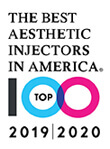ROSACEA, A TREATABLE CHRONIC CONDITION
Welcome to our blog. A place where our doctors and staff will be providing you with the latest information from our practice, and what's happening in our industry.
ROSACEA, A TREATABLE CHRONIC CONDITION
Rosacea (pronounced roh-ZAY-sha) is a common disorder of the facial skin that afflicts an estimated 14 million Americans, many of whom do not know they have it. It affects mostly adults, usually people with fair skin, between the ages of 30 and 60. Rosacea is an inflammatory condition characterized most typically by facial redness and/or acne-like eruptions of the nose, cheeks, chin and forehead. Rosacea can also manifest as watery, irritated eyes or as small visible blood vessels on the face. Although rosacea is not harmful in and of itself, it is often progressive, and if left untreated can significantly impact one’s personal appearance. Surveys indicate that nearly 70 percent of rosacea patients report lowered self-esteem and difficulties with social and professional interactions.
The cause of rosacea is unknown, and there is no cure. However, medical intervention can control the signs and symptoms of this potentially life-disruptive disorder. Doctors often prescribe topical and/or oral antibiotics to treat rosacea, more for their anti-inflammatory properties than to kill bacteria. Azelaic acid, which reduces redness and inflammation, is another commonly prescribed topical medication. Because symptoms may recur when medications are discontinued, long-term treatment is often necessary.
With long-standing rosacea, the characteristic enlarged blood vessels and facial redness can become permanent. In these cases, laser surgery may be a more suitable treatment. Treatment with a vascular laser can significantly reduce the visibility of blood vessels, decrease redness and improve overall appearance.












